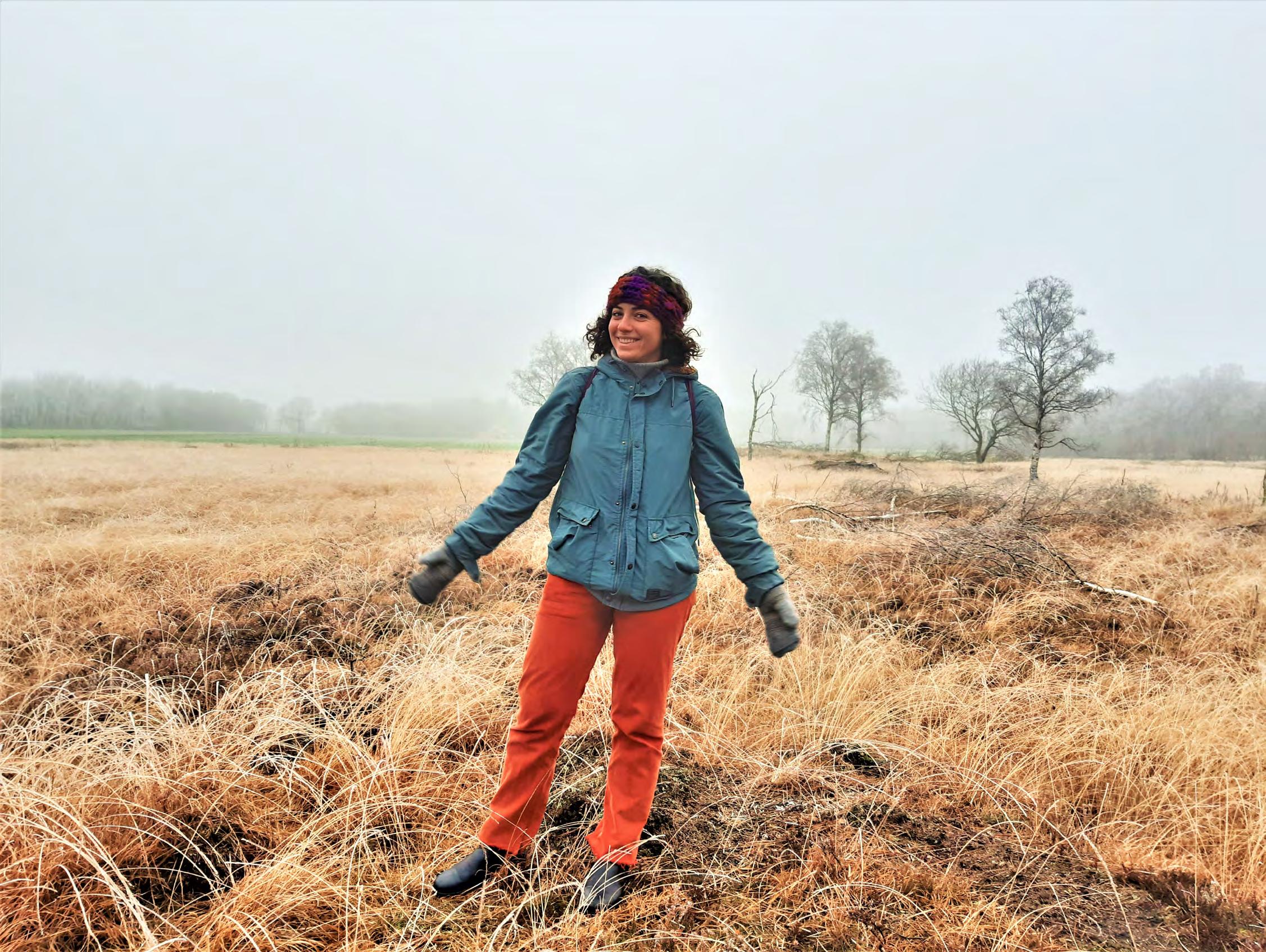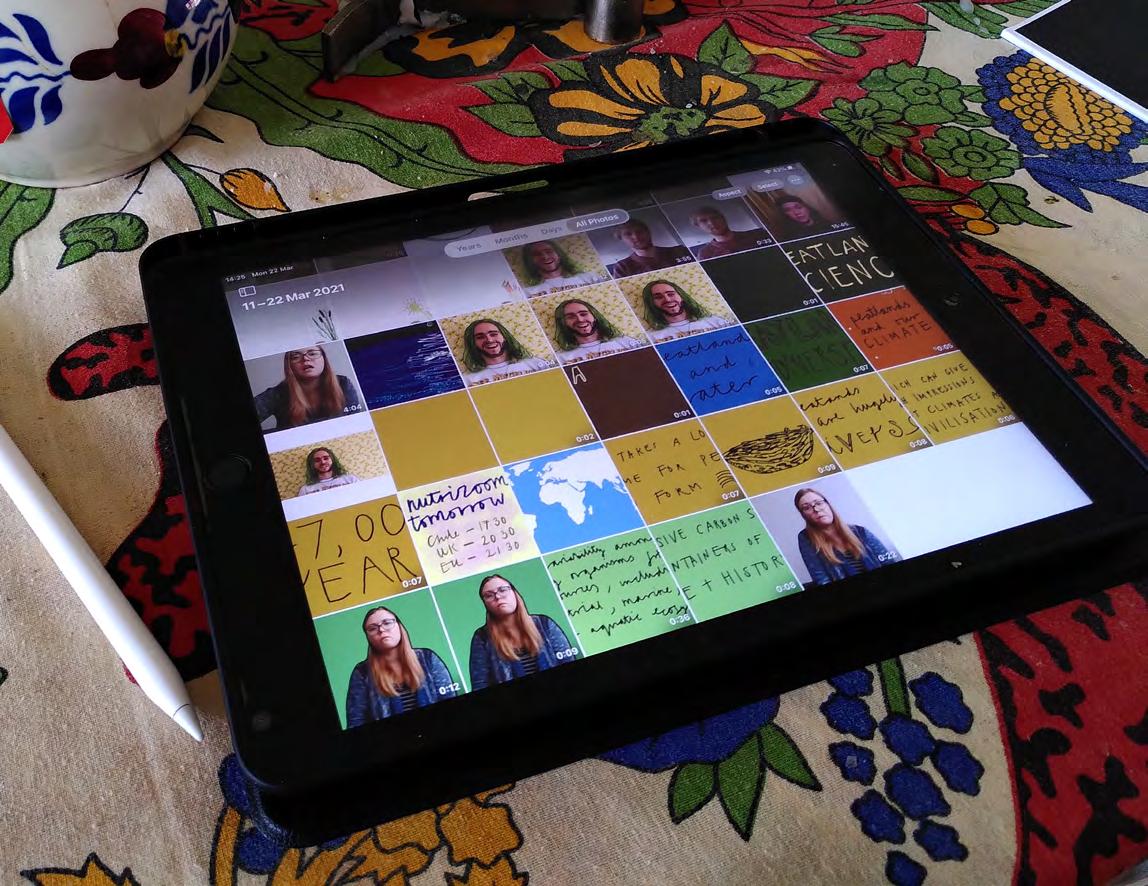
6 minute read
RE-PEAT collective fight for planetary peat protection
Peatlands cover a small proportion of land area on the planet, but are monumental in reducing the release of greenhouse gases that would otherwise be released and contribute to climate change. Yet, not enough is being done to restore and protect these fragile environments, which host a diversity of unique vegetation and wildlife.
RE-PEAT are a worldwide collective of students, researchers, artists and activists who are raising awareness of what peatlands offer, and the importance of protecting them. They communicate key facts, figures and insights through creative media, from digital materials to events.
Advertisement
Above: One of the co-founders, Carolina Maienza in the peatland. © RE-PEAT. All rights reserved.
Q & A - Bethany Copsey & team (RE-PEAT)
Please share some the most interesting and important facts you know about peat:
Peat is really slow to form - at the rate of about 1mm per year. This is a really interesting timescale to think on, forcing us to think beyond our own human lifespans. If you’re standing on a peatland that is forming at 1mm per year, you can be standing on thousands of years of layered history. That is really a special feeling!
Peatlands only cover about 3% of the world’s land and freshwater surface area, yet they are the largest terrestrial carbon store on earth, storing about 25% of global soil carbon. That is twice as much as forests!
Peatlands are really a global phenomenon - every continent has peatlands, even Antarctica!
Recently, a study done by the Potsdam Institute for Climate Impact Research showed that for Earth’s land area to become a global net carbon sink by 2100 - something mitigation pathways studies say should happen - 60% of the currently degraded peatlands need to be rewetted alongside the protection of currently intact peatlands.
How did RE-PEAT begin and become the established youth-led collective it is today?
RE-PEAT began almost accidentally really - it’s quite a delightful surprise to find ourselves where we are today! A few members of the team were on an excursion to a peatland in Germany during an action camp. We were led through a peatland - both literally and statistically so to say. We were told about the truly incredible carbon capture potential of peatlands, the varied ecosystem services, the current agricultural model that supports drainage-based agriculture, and the lack of awareness of all of these elements.

It sort-of crashed into us and we really felt a deep need to do something about it. We began by telling friends about it and the idea gathered momentum that way. This is something that is strongly reflected in our workings as a group - ultimately we are also just friends working on a project that
Above: A conceptualisation of Amsterdam floating on a stilts in a peatland. © RE-PEAT. All rights reserved.
we are all passionate about and connected through. We value the opportunity to learn as we go - and understand this as what our whole human experience is supposed to be: a great learning adventure that we can approach with wonder and imagination. This idea seems to have resonated well with people both in and outside of the peat sphere.
Your Peat Anthology (2020 EU Edition) available digitally is incredibly well presented. How did you create this and how many contributors were involved?
From the beginning of RE-PEAT, we were aware of the Common Agricultural Policy and how it was in no terms designed to incentivise peatland protection and restoration. Indeed, the policy actually subsidises and effectively bakes drainage-based agriculture into the system. Farmers and landowners are not given financial assistance to shift even if they would like to.
What we also came to realise was that there were many policy-advisors, scientists and activists engaging in this and working towards a more environmentally proactive agricultural policy. The question then became about what we could contribute to the conversation. We chose a storytelling, emotive way of interacting with the topic; through which we hoped to influence policy-makers.
We created the Peat Anthology which compiled 45 stories, poems and artistic responses to peatlands. We wanted to demonstrate the varied perspectives and experiences people have, and use that to demonstrate to policy-makers that these ecosystems need to be part of their discourse.
The Anthology included accounts from people we’d previously collaborated with as well as those who we got to know through this project - which was a really great way to connect with new people involved with peatlands.
Of course, this was also a learning experience and we’ve taken a number of lessons from this project. This includes incorporating and centering underrepresented voices to a greater degree in other projects. We’re excited to bring this into upcoming events, such as a collaboration with In Situ in May - check out social media for more on this shortly!
Below: Peatscape meets cityscape: Ilperveld, Amsterdam. © RE-PEAT. All rights reserved.

What are your plans next and how can others support you to fight for the conservation of peatlands?
Following on from the Peat Anthology, we decided to organise events that focus on the UK. With Brexit, the UK has to create new policies in a number of areas, which ends up being an interesting opportunity to have more ambitious peatland policies. Hosting the COP26 and the World Congress of Soil Science, it is also a critical couple of years for the UK. To explore the various topics, we’ve launched our “UK Anthology Series.” This is a 10-month long series with each edition exploring peatlands and a different intersecting topic, such as local social justice issues, environmental issues and/or a specific UK or international policy.
We’re also busily working on Peat-Fest 2021. The 2020 edition was our first major event - it was a 24-hour long, global and online festival celebrating peatlands from many different perspectives. There was a packed schedule with over 50 sessions throughout the day.
We’re delighted to be hosting it again this year! Last year our primary audience were people with previous experience with peatlands - this year we’re working on appealing to those with little knowledge of peatlands to get them excited about this wonderful ecosystem.
We also intend to better amplify voices from the Global South and other underrepresented voices. We recommend that people check out our website & projects to find out more about peatlands and what RE-PEAT is doing. A lot of our work is also focused on collaboration so it’s a great way to find out about other projects as well.

Above: Behind-the-scenes peek of our UK Anthology Series. © RE-PEAT. All rights reserved.
Final thoughts
When an action camp went to a peatland in Germany, they were exposed to the carbon capture potential of these settings. They felt compelled to spread the word, and started speaking out to others about it. From there, a collective grew across the world to raise awareness of peatland conservation, known as RE-PEAT. This collaborative group is made up of students, scientists, artists and more, expressing the advantages of peatland conservation in diverse mediums: from digital publications, artwork, photography, digital events, festivals and more. We wish RE-PEAT the best for hosting the online festival Peat-Fest 2021 as they break out to let even more diverse audiences know about the potential of peat to protect our planet. Links
RE-PEAT is an international youth-led group that works to bring about a peatland paradigm shift. They work in three main directions: education, collaboration and reimagination. As such they organise a variety of different events and activities with a youthful & creative approach. They also use peatlands as a lens through which to analyse other societal phenomena - such as time and memory. The team is full of peat experts and enthusiasts who are all passionate and curious about peatlands! Twitter: @repeatearth
Instagram: @repeat.earth
Linkedin: https://www.linkedin. com/company/re-peat








